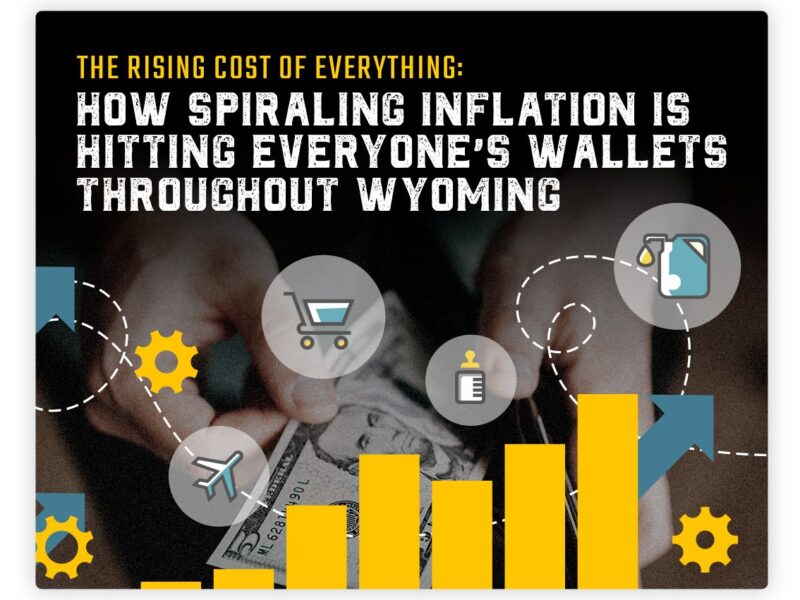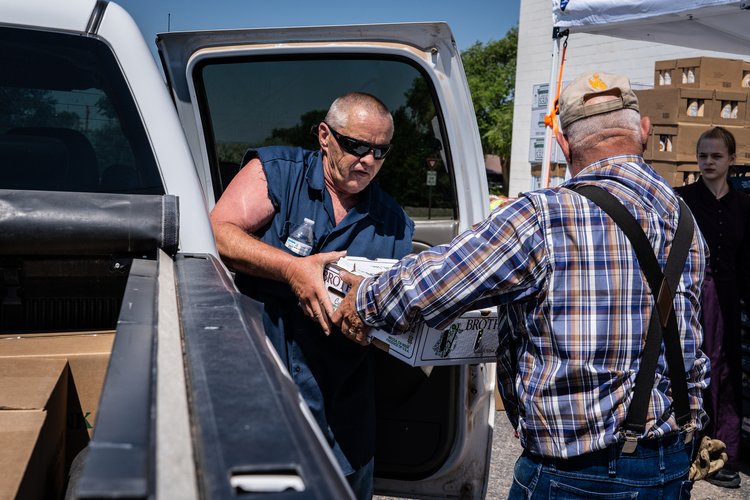THE RISING COST OF EVERYTHING: Food Banks Spend More, But Get Less for Their Money
Amid 40-year high inflation, nonprofits serve 50% more clients compared to last year while UW students access campus food pantry
- Published In: Other News & Features
- Last Updated: Oct 24, 2022

By Kristi Eaton
Special to the Wyoming Truth
With inflation at a 40-year high and grocery prices up 13% in 2022, food pantries and hunger relief organizations across Wyoming are serving nearly double the number of clients from a year ago.
Rachel Bailey, executive director of Food Bank of Wyoming in Evansville, said the organization’s hunger relief partners across the state are reporting a “50% to 100%” rise in households that access their services since fall 2021, with some households seeking food assistance for the first time.
“Currently, monthly costs are averaging about $121,600, which is nearly triple what it was pre-pandemic,” Bailey said. “And we are still seeing higher need across Wyoming than pre-pandemic” among all demographic groups.
Compared to last fall, the Food Bank is paying 71% more for potatoes, 50% more for onions and 50% more for cucumbers—all staples that are regularly distributed to fulfill its mission to provide nutrient-rich foods. Supply chain disruptions also have affected food banks’ ability to obtain affordable groceries.

“The amount of food that we are putting out, we do not feel like [it] meets the current need right now,” Bailey noted. “Our donated product is down, and our USDA commodities product is down. So how we’re trying to fill that gap is to purchase more food. We are purchasing about double the amount of food, but we’re spending about triple on that food [compared to] what we were spending pre-COVID.”
Another way of looking at it: a truckload of sweet corn has skyrocketed from $8,280 to $13,320, and a truckload of cucumbers has soared from $10,080 to $14,040.
Eiron Wilson, outreach director at Element Church’s food pantry in Cheyenne, said her organization spends between $6,500 and $7,000 per month to serve about 1,000 families. To maximize the food pantry’s budget, Wilson relies on the rescue food program at Sam’s Club, which donates food that is close to “use by” dates.
People seeking assistance represent all socioeconomic backgrounds—from folks on public assistance to and senior citizens on fixed budgets to single parents, middle-class families and everyone in between, according to Wilson.
“They’ll come get our [food] to help kind of stretch those other groceries out,” she said.
Karen Wallentine, who works with the South Lincoln HRC in Kemmerer, sees 15 to 20 families during the two days a week the food pantry is open each month. Monetary and in-kind contributions haven’t decreased to date. As the holidays approach, donations typically start to ramp up, and Wallentine said she is curious about how inflation will impact giving this year.
College students aren’t immune from spiraling food costs, either. At the beginning of the COVID-19 pandemic, the Associated Students of the University of Wyoming created the UW Food Security Task Force to address food insecurity issues for the student body and community.
Students who live on campus participate in the UW meal plan, but those living off campus might not have access to the same resources, according to Izzie Jones, coordinator of the UW Food Share Pantry.
“College students are often in vulnerable financial situations and can find themselves having a hard time affording sufficient food, especially in the case of an unexpected event—a car breaking down, late paycheck or working few hours because of school,” Jones said. “A 2020 survey revealed that almost 40% of University of Wyoming undergraduate students experience food insecurity, [so] it is a very real concern on our campus.”
The UW Food Share Pantry receives funds from UW’s foundation and procures food through a variety of sources, including faith-based groups. Jones said the pantry buys fruits, vegetables, milk, bread and snacks on a weekly basis to meet the community’s escalating need.
In the first eight months of 2022, the UW Food Share Pantry served 1,693 visitors, shared 20,000 pounds of food and spent $12,745 to buy 8,000 pounds of fresh fruits, vegetables and perishable food. In addition, the organization distributed 46 bags of diapers. September was its busiest month yet, with 490 visits and distribution of 4,620.56 pounds of products.













